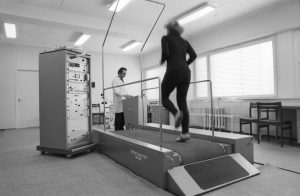
Physical activity and exercise interventions are useful in facilitating the functional recovery of those with chronic stroke and, routinely, are gait-specific. While treadmill training has proven useful in gait performance recovery post-stroke, its efficacy on balance dysfunction has not been systematically reviewed. The purpose of this systematic review was to determine the effect of treadmill training (TT) interventions on balance dysfunction in individuals with chronic stroke.
A systematic literature search of PubMed, EMBASE, and CINAHL was performed. Eligible randomized controlled trials were published between 2007 and 2016. Selected trials investigated TT interventions in persons with chronic stroke and implemented at least one objective balance measure. Methodological quality was assessed using PEDro criteria. Eight studies met eligibility criteria and were included in the qualitative analysis. Studies differed in TT implementation and use of adjunctive treatments; however, all trials demonstrated improvements in balance measures that were as effective, if not more so, than conventional physical therapy treatments, including targeted balance training.
This review recognized moderate evidence in favor of TT interventions in balance and stroke rehabilitation programs. With TT, intensity may be a more critical factor than specificity and may offer additional carryover to recovery parameters of postural control and balance, beyond gait performance. It is recommended that clinicians utilizing TT incorporate objective measures of balance to assess the potential for skill transference and improvements in balance. Higher quality studies and additional research are needed to denote critical parameters by which improvements in balance may be optimized.
No comments:
Post a Comment